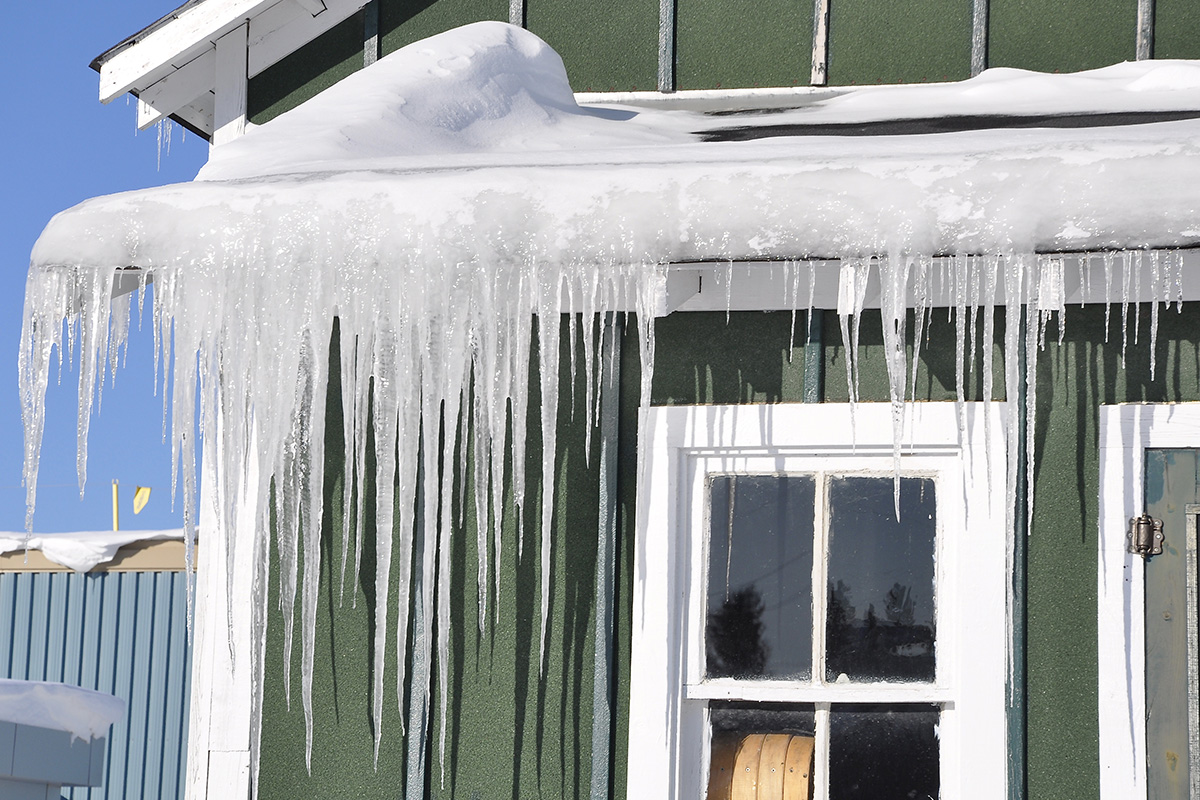It’s winter here in Western New York, and while most of us are worried about salting and shoveling our driveways and sidewalks it’s important to pay attention to your home’s roof to avoid a common condition called ice dams. Ice dams can cause all kinds of issues inside and outside your home and, unfortunately, most homeowners don’t know about it until it’s too late.
What is an ice dam?
An ice dam is what happens when snow or water builds up on the roof, eventually creating an “inner tube” of ice in which melting snow can accumulate. As this melts it seeps down and refreezes at the foot of your roof, then starts to flow back up along the top of your roof–often into places where you don’t want it to go. This could be the insulation, your ceilings and even your walls. Ice dams not only damage your roof but they can lead to water leaking inside and cause ceiling and floor damage and mold and mildew problems.
Why does this happen?
There are two key culprits in the formation of ice dams: snow and heat. The more snow you get–and in a shorter amount of time–the greater your chance of getting an ice dam. However, even if it doesn’t snow again, the number one contributor to indoor ice dams is excessive heat loss through your roof. Warm air rises and escapes into the attic, where it causes water vapor to condense on the underside of your roof’s sheathing (or top floor ceiling). This makes its way down to the cold eaves (the bit under the overhang) where it forms icicles and refreezes until it becomes like concrete. It can even push out past the edge of your roofing material. Heat escaping from the living space below also can exacerbate the problem. If you have a wood-burning stove, for example, the warm air it releases will melt snow on the roof–and if there’s no insulation to stop that heat from escaping, it will quickly refreeze and create an ice dam.
What are the signs of an ice dam?
If you see icicles hanging from your gutters or ceiling, there’s a good chance that an ice dam has formed somewhere above them. Also look for stains on your ceilings and walls as melted water flows back down over time. Another great way to check for ice dams without having to actually go up on your roof is to inspect your attic. Damp insulation or water spots can be a dead giveaway that there is a moisture issue inside your home.
How can you prevent them?
There are several things you can do to help prevent ice dams:
- Remove snow from your roof regularly by CAREFULLY using a roof rake.
- Make sure your attic is properly insulated.
- Eliminate heat loss. Tighten up air leaks around doors, windows, and other openings. Make sure you have proper ventilation in your attic so it doesn’t get too hot or stuffy.
- Schedule routine roof inspections. This should be done at least once a year, ideally during warmer months when you’ll be able to go up into the attic. Always hire an experienced professional who can safely walk around on your roof without damaging anything–and watch carefully for any ice dams that might form before they become a serious problem.
- Use insulation foam or caulking to seal cracks and crevices where water might enter the house.
- Install heat cables along the edge of the roof (or hire a professional to do this for you). If there’s already an ice dam, you can try chipping away at it bit by bit to let the water drain. Be very careful while doing this as you don’t want to damage your roofing materials.
Why should you care about an ice dam?
Ice dams might lead to flooding that can damage ceilings, floors and furniture. Ground or rooftop deicing salts only make the problem worse by melting the ice at the bottom of your roof and then seeping into your insulation to refreeze as water along the top of your roof. This causes more weight on top which leads to more ice build-up, trapping water inside.
Ice dams can form on roofs during the winter months when snow and ice accumulate and don’t melt properly. This can lead to water seeping into the home and causing damage to ceilings, floors, walls, and furniture. There are several ways to deal with an ice dam if it forms, but the best way to prevent them is to make sure your roof is properly insulated. Have a professional check it out to see if there are any weak spots. The WNY Company is here all year to insure your home stays warm and dry this winter. If you have a roofing or siding issue that requires immediate attention please call us at (716) 776-7663.

